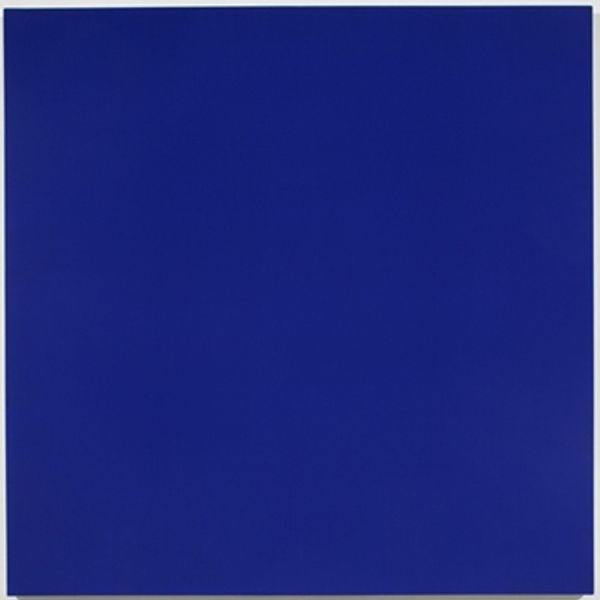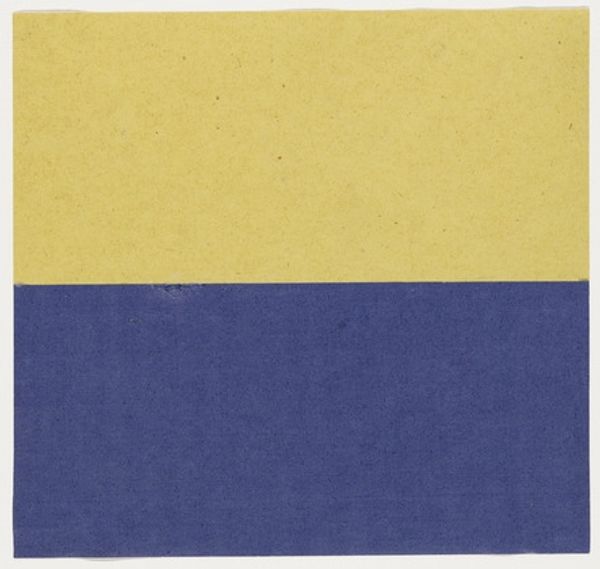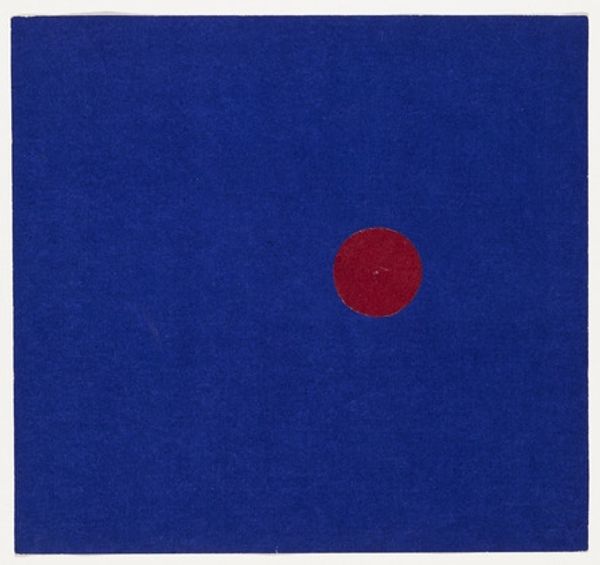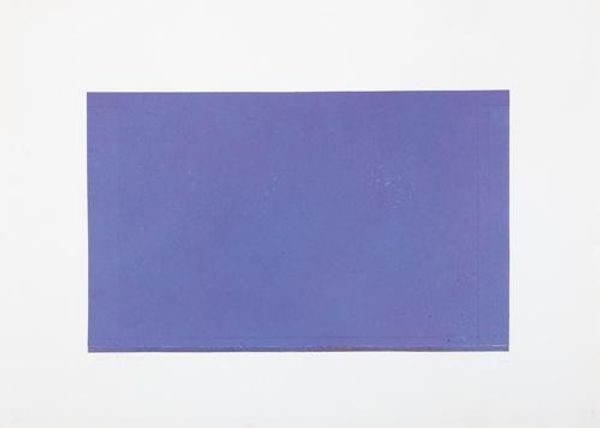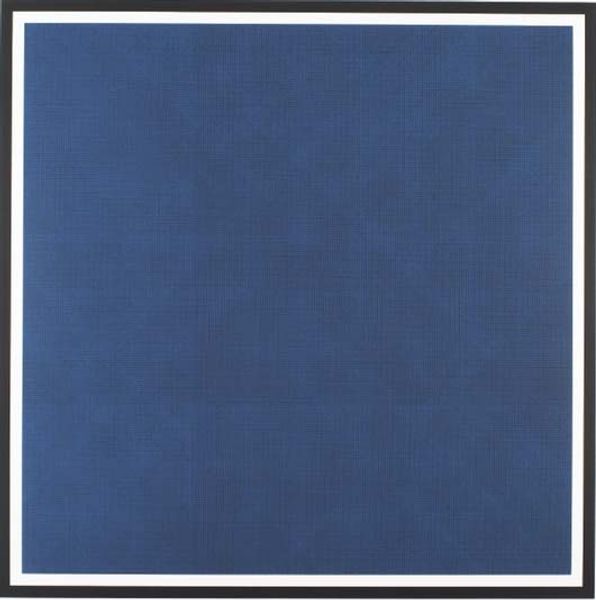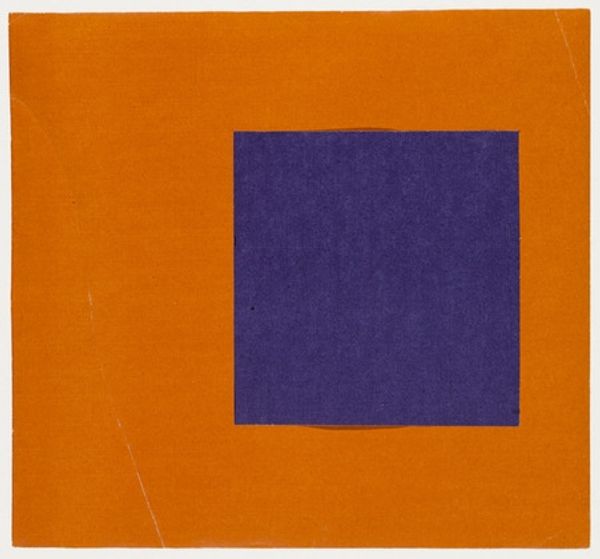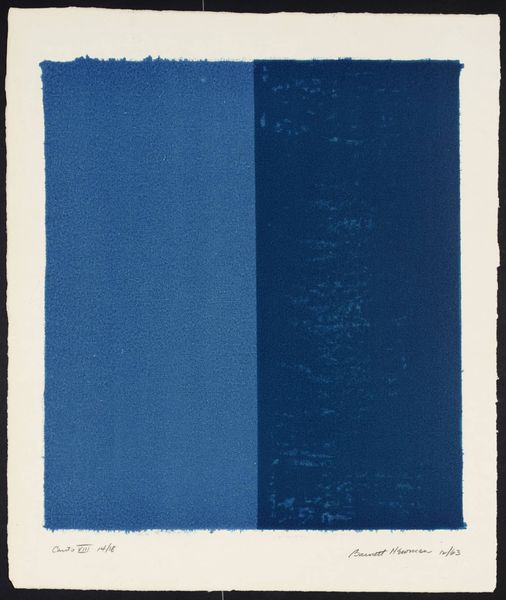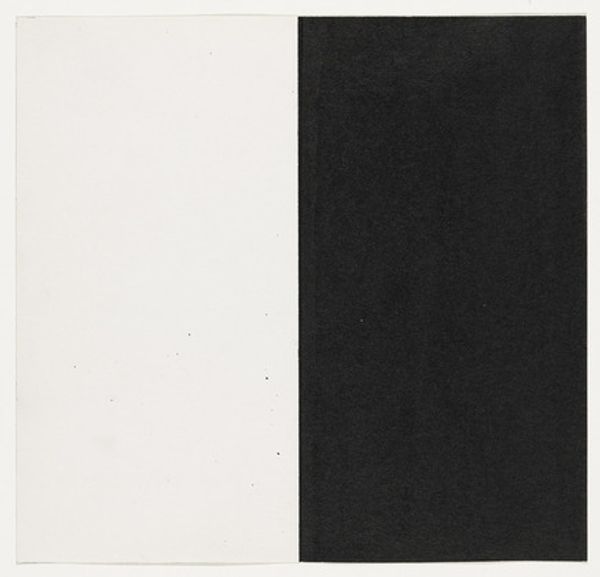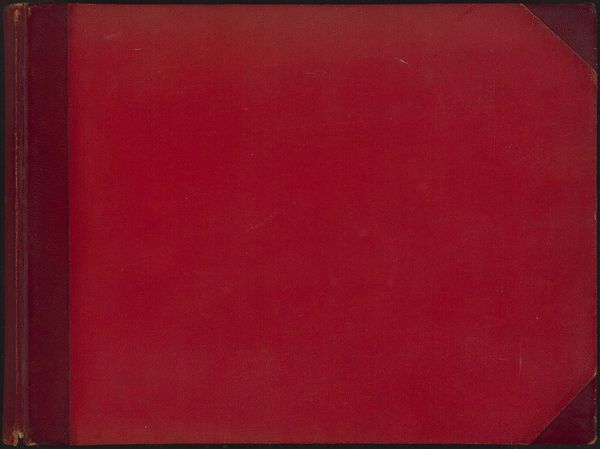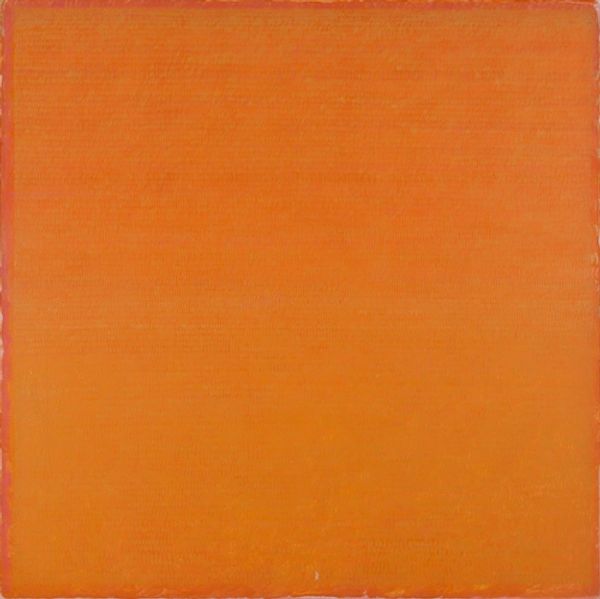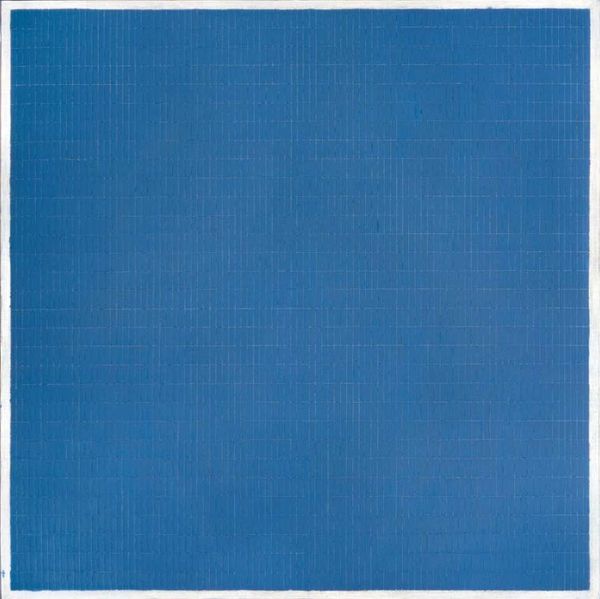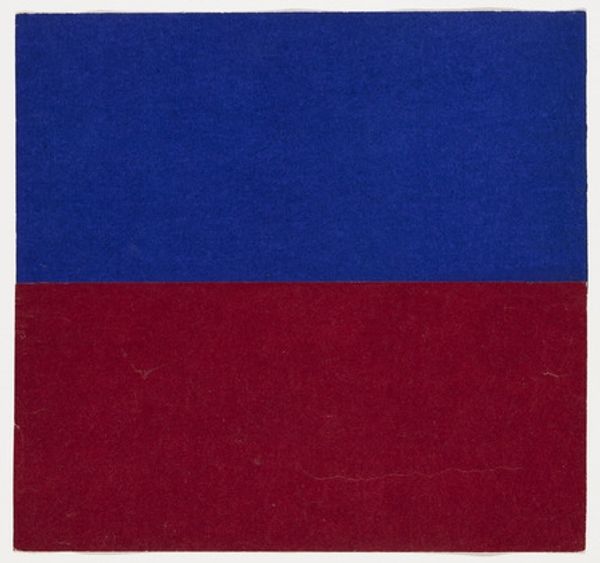
painting
#
abstract-expressionism
#
painting
#
minimalism
#
colour-field-painting
#
geometric
#
abstraction
#
modernism
#
hard-edge-painting
#
monochrome
Copyright: (c) Ellsworth Kelly, all rights reserved
Editor: This is Ellsworth Kelly’s *Blue from the series Line Form Color*, painted in 1951. It's just a square canvas filled with an intense, uniform blue. It's strangely calming but also…intense. What should we make of it? What do you see in this piece? Curator: This monochrome painting feels radical, even now. Think about 1951. Kelly’s stripping away of representation happened in a historical moment loaded with anxiety. World War II had just ended, and the Cold War was escalating. He's making a statement by rejecting the expected, the figurative. What do you think it's rejecting? Editor: Well, maybe the pressure to tell stories? Or to paint something recognizable? But does abstraction mean turning away from the world's problems? Curator: Not necessarily. Instead, it can be a powerful commentary on them. By refusing to depict, Kelly forces us to confront the fundamental elements of art and perception, in relation to historical context. Think about the significance of colour. Blue often symbolizes melancholy, contemplation. But here, it’s just…blue. What does it do to *you*? Editor: I guess I thought abstract art was more about the artist's inner feelings, not… society. This makes me think about the politics of seeing, like, who gets to define what "good" art is, and why. Curator: Exactly. And Kelly, by reducing painting to its bare essence, challenged those power dynamics. Now, does that initial sense of calmness feel different? Editor: Totally. I still feel calm, but it's now like a… a questioning kind of calm. Like it is inviting change. Thanks, I’m looking at the painting with new eyes. Curator: And I'm appreciating it more knowing how you feel about it, and knowing your fresh perspectives.
Comments
No comments
Be the first to comment and join the conversation on the ultimate creative platform.
